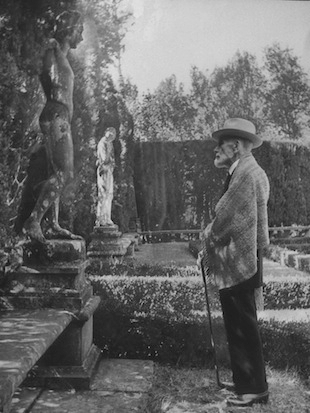Robert Cumming’s opening sentence is: ‘Kenneth Clark and Bernard Berenson first met in the summer of 1925.’ One is then transported to terraces of cypress and statuary, sunshine and high art, Edith Wharton and Paul of Yugoslavia cooing over a balustrade. Clark was 22 and had just finished at Oxford; he was ‘doing’ Italy with Charles Bell, Keeper of Fine Art at the Ashmolean. Lunch at I Tatti, Berenson’s citadel of aesthetic endeavour near Florence, was arranged. By the end of it, Clark had been taken on as Berenson’s assistant for the revision of the master’s classic The Drawings of the Florentine Painters.
Cumming tweaks the myth:
Clark’s youthful self-assurance and aloofness would not have been a discouragement for Berenson: aloofness was one of his own notable characteristics. Equally, the rich, the well-bred and the good-looking held a perpetual fascination for him, as did clever, articulate, Oxford-educated Anglo-Saxons.
Clark was indeed rich — his family had invented cotton reels — but he was not good-looking. Nor was Berenson aloof: when not working, he was intensely gregarious and received countless guests at I Tatti, which Cumming rightly describes as ‘a 20th-century version of a Renaissance humanist court.’ It was financed by Berenson’s authentication work with the dealer Joseph Duveen in the golden age of the old-master market.
When he took on Clark, Berenson was 60. He was not homosexual but his close male friends had been. Otherwise all his close friendships were with women. This would never be Clark’s milieu, and in a sense their lengthy correspondence was a substitute for a friendship which didn’t happen. Clark soon returned to London, became married with children, and rapidly forged an independent career. He was gifted in his own right, but it was his association with Berenson which kick-started him in the art world.








Comments
Join the debate for just £1 a month
Be part of the conversation with other Spectator readers by getting your first three months for £3.
UNLOCK ACCESS Just £1 a monthAlready a subscriber? Log in